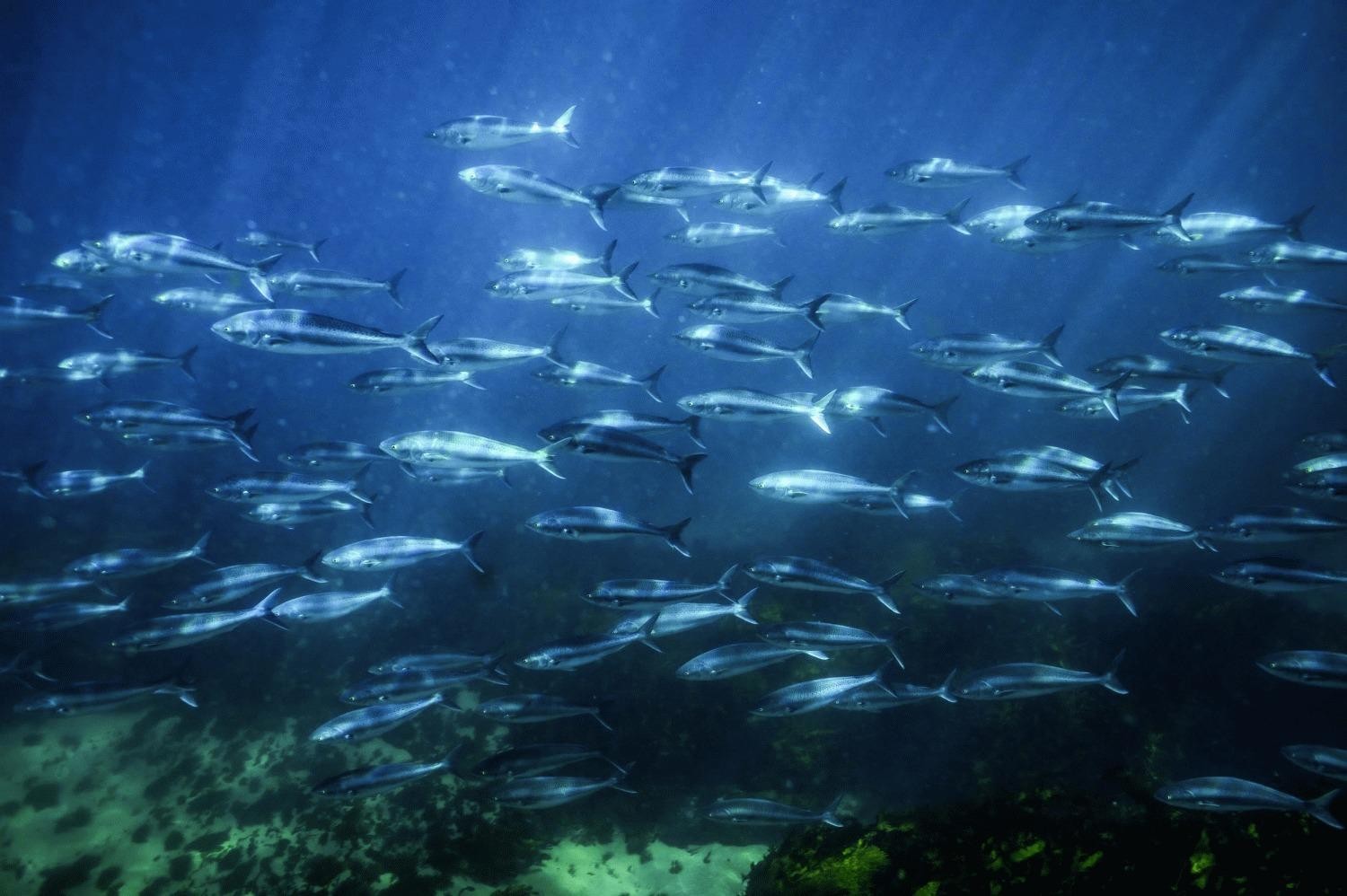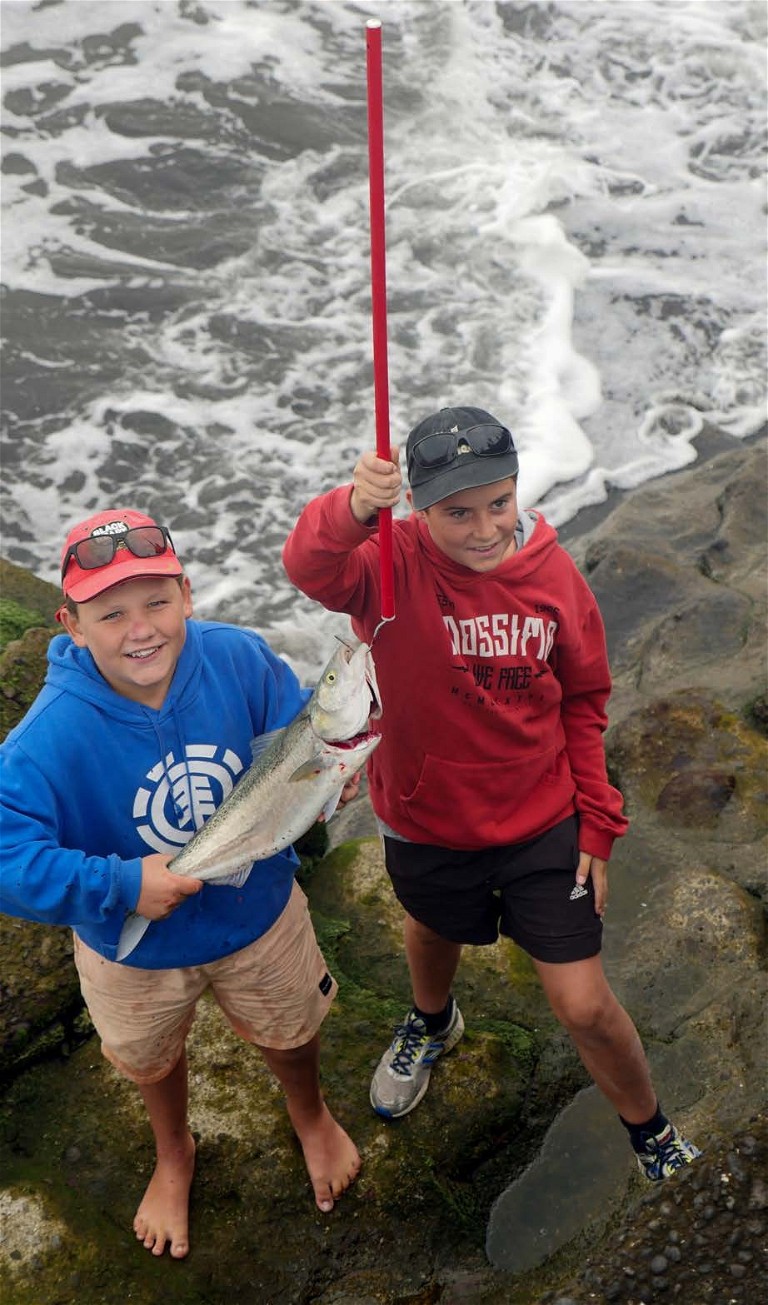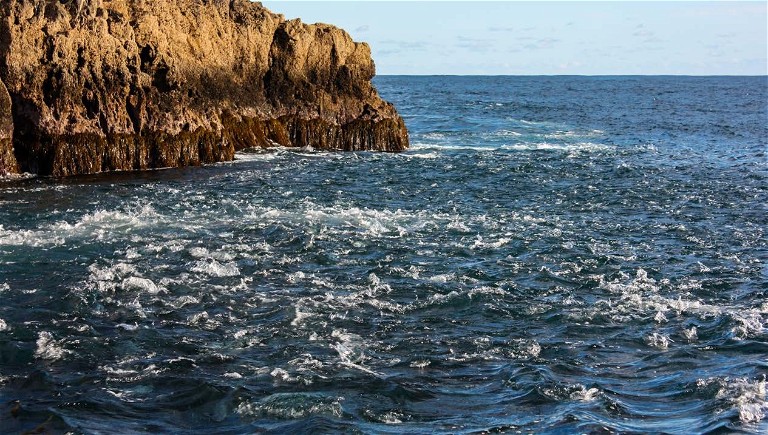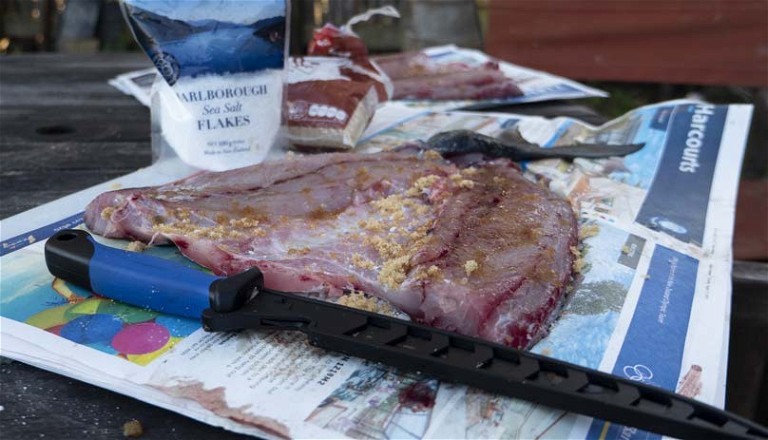Kahawai National Treasure
Imagine you are fishing in a different country for the first time. You cast out a lure on a light spin outfit, and after a few winds, you are connected to a fish making huge runs and repeatedly leaping clear of the water. As Adam Clancey suggests, doesn’t this sound epic?

In New Zealand, you often hear something along the lines of “another bloody kahawai” when fishing. But I think kahawai is one of the most underrated fish in the country. Just the name kahawai – its Māori translation means ‘strong in the water’ – rightly gives the fish a status that all anglers should admire. There are many more reasons why kahawai is a national treasure to all New Zealanders, one being its nationwide distribution for both land- and boat-based anglers.

Kahawai are a great fish for the kids.
A kahawai is often the first decent fish many people catch when they start fishing. In the early days of my fishing journey, when trips to the west coast surfcasting were common, I remember the great battles I had to get big kahawai through the surf. I also remember my early trips on the Waitemata Harbour aboard the blue boats, watching a kahawai tangling just about every line on the boat as it battled away. There is no doubt that kahawai fight well.
These days most anglers have a good appreciation for the fight of the kahawai, and while it is nice to see plenty released, it’s also good to see a few prime kahawai being taken for food. One of the issues that may have diminished the status of kahawai in the past is the fact that the catch may not have been treated with the respect it deserves. Like all fish, it is important to kill them quickly and keep them chilled with some good saltwater ice or slurry. The eating qualities of kahawai are also enhanced by bleeding the fish as soon as it is caught. This can be done by cutting across the patch of skin just below the gills with a sharp knife.
The other reason kahawai is less popular is that the flavour can be strong when fried and not to everyone’s taste. Better ways to cook and prepare kahawai include raw in sashimi or ika mata style dishes (cured in lemon or lime juice and served in coconut cream) and smoked. Smoked fish pies or fish cakes made with well-smoked kahawai are hard to beat. It has become popular to dry age fish in the fridge for a few days – done properly, it adds a new dimension to the taste when eaten raw or lightly pan seared.
Most standard lure or bait techniques will get the job done when fishing for kahawai. To get the most out of kahawai fishing, it’s hard to beat chasing them with lures. The art of catching a kahawai by spinning became an essential skill to develop, especially when targeting kingfish off the bricks. Hiking into remote spots, you often did not have the luxury of being able to carry a heap of bait and berley, so catching kahawai was crucial for success. To achieve this meant being on the rocks at daybreak, casting and retrieving for hours to catch a live kahawai which would be repurposed as a livebait.

Where it all starts for many budding anglers – kahawai from the shore.
“ I REMEMBER THE GREAT BATTLES I HAD TO GET BIG KAHAWAI THROUGH THE SURF. ”

When kahawai form dense surface schools they are often inadvertently hooked by anglers targeting kingfish!
“ KAHAWAI WILL REJECT LURES MAINLY BECAUSE THEY ARE THE WRONG SIZE – IN MOST CASES TOO LARGE – OR THEY ARE NOT BEING RETRIEVED CORRECTLY. ”

It pays to ‘match the hatch’ when using lures to target kahawai.
The angler who caught the first kahawai was the one who was most often rewarded with the initial kingfish bite.
At other times kahawai can be prolific and very easy to catch – be it when they school up around river mouths chasing baitfish or congregate in massive schools sipping the surface when feeding on plankton and krill. The correct tackle and technique will be very rewarding at times like these.
Fishing in schooling kahawai can be like shooting fish in a barrel. However, it can also be extremely frustrating when they seemingly ignore every offering. Kahawai will reject lures mainly because they are the wrong size – in most cases too large – or they are not being retrieved correctly.
Kahawai feeding on tiny whitebait or plankton will reject large lures but willingly take those that imitate the food source – ‘match the hatch’ as they say in trout fishing. Flashy silver lures are so effective in fooling kahawai because they mimic the prey. When it comes to the retrieve, the aim is to provoke a strike response. This is where a one-size-fits-all retrieve does not work. There are times when you will need to wind flat out to get a kahawai to strike, while at other times you will need a retrieve that keeps the lure just below the surface. Sometimes it can be as simple as letting the lure stop and flutter down to get the right reaction.
Selecting lures that are fit for purpose is a must. Although many lures look similar, the way they swim will vary greatly – especially with different retrieves. For speedy retrievals, a small, slim and heavy jig is best, while the traditional hex wobbler is great when keeping the lure just below the surface. For lures that will work better with a slower pace and flutter, try using lures with a wider profile and a bend or twist in the body. A small popper or stick bait is one of the most fun lures to use. Having a school of fish chasing a popper and smashing on the surface is spectacular! If possible, set lures up with strong single hooks as opposed to trebles, as this not only helps get a better hook-up but also makes it a lot easier and safer to release fish unharmed. Bending the barbs down to make hooks barbless is also a good idea when the action is fast and furious.

Rivermouths are a fantastic place to encounter kahawai schools.

Spinning from the shore is an effective way to catch kahawai.

Kahawai feeding on tiny whitebait or plankton will reject large lures but willingly take those that imitate the food source.
“ Having a school of fish chasing a popper and smashing on the surface is spectacular! ”

Fresh kahawai split and ready for the smoker.

Smoked kahawai and fish cakes – two kiwi classics!

It’s fair to say that species like snapper and kingfish get all the good press as the glamour species. But the kahawai is the fish that saves many a fishing trip – it is a great sport fish and versatile as an eating fish, livebait and cut bait. Let’s face it, who has not enjoyed the simple pleasure of catching a kahawai and smoking it quickly in a portable smoker? A national treasure, you bet.